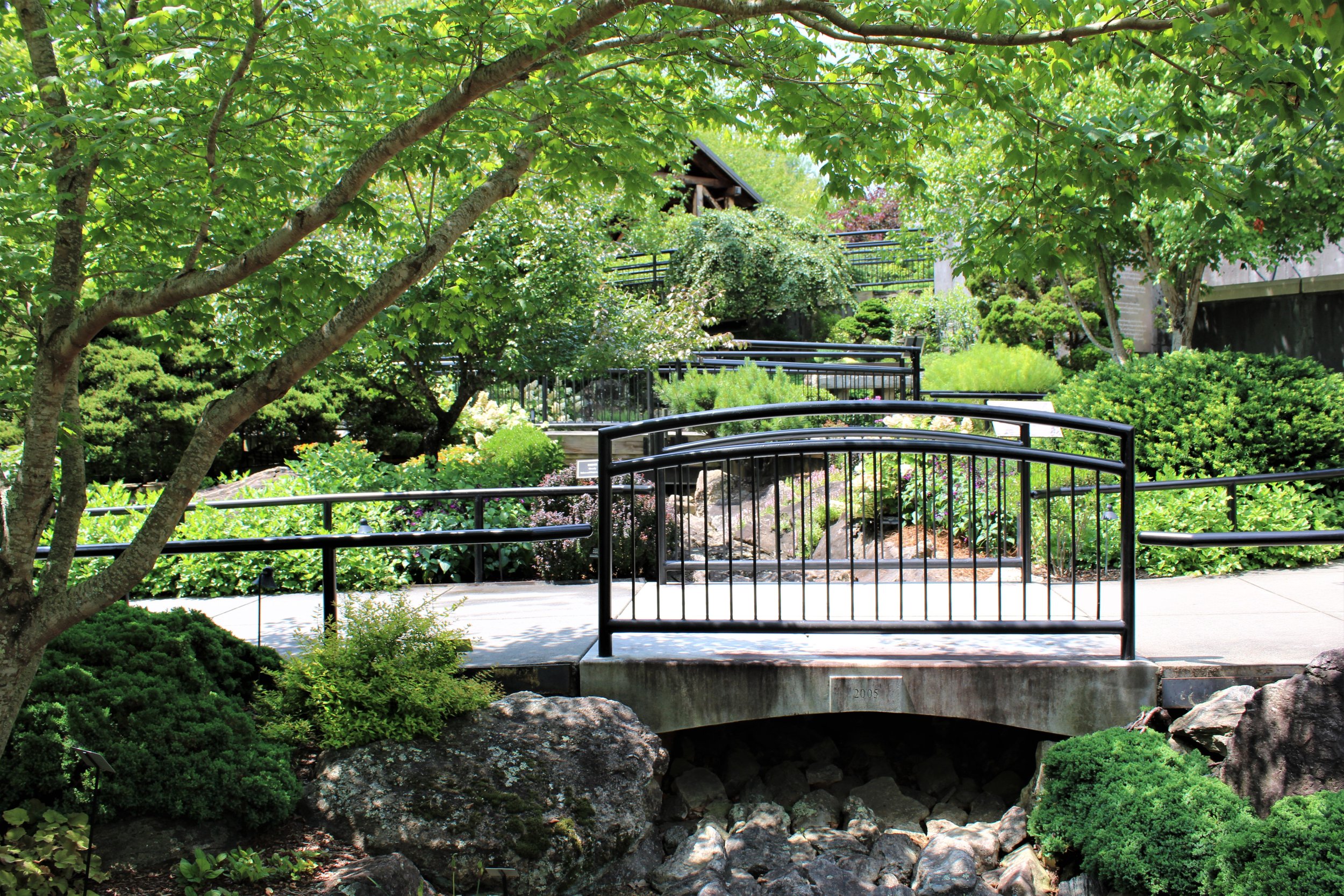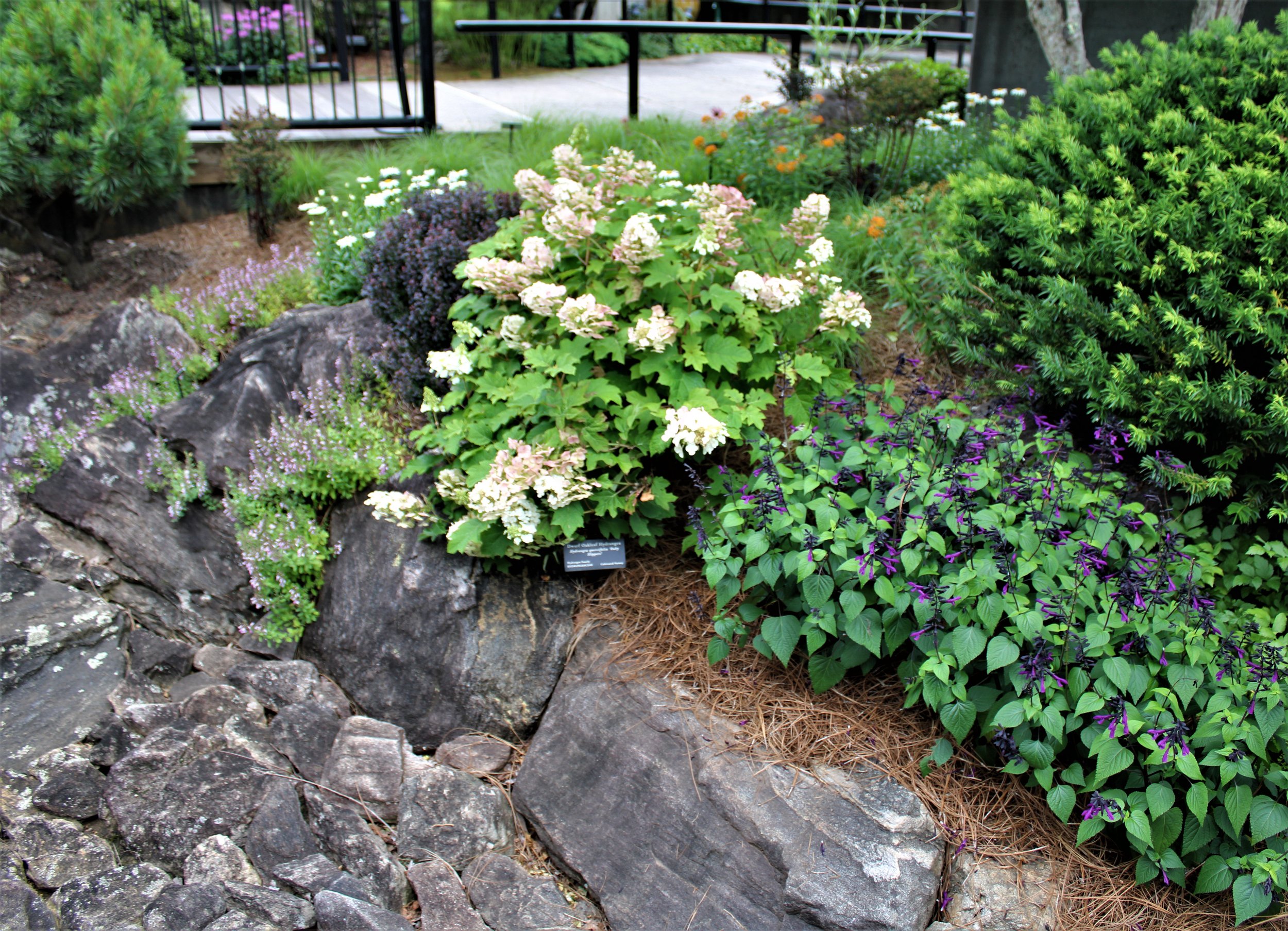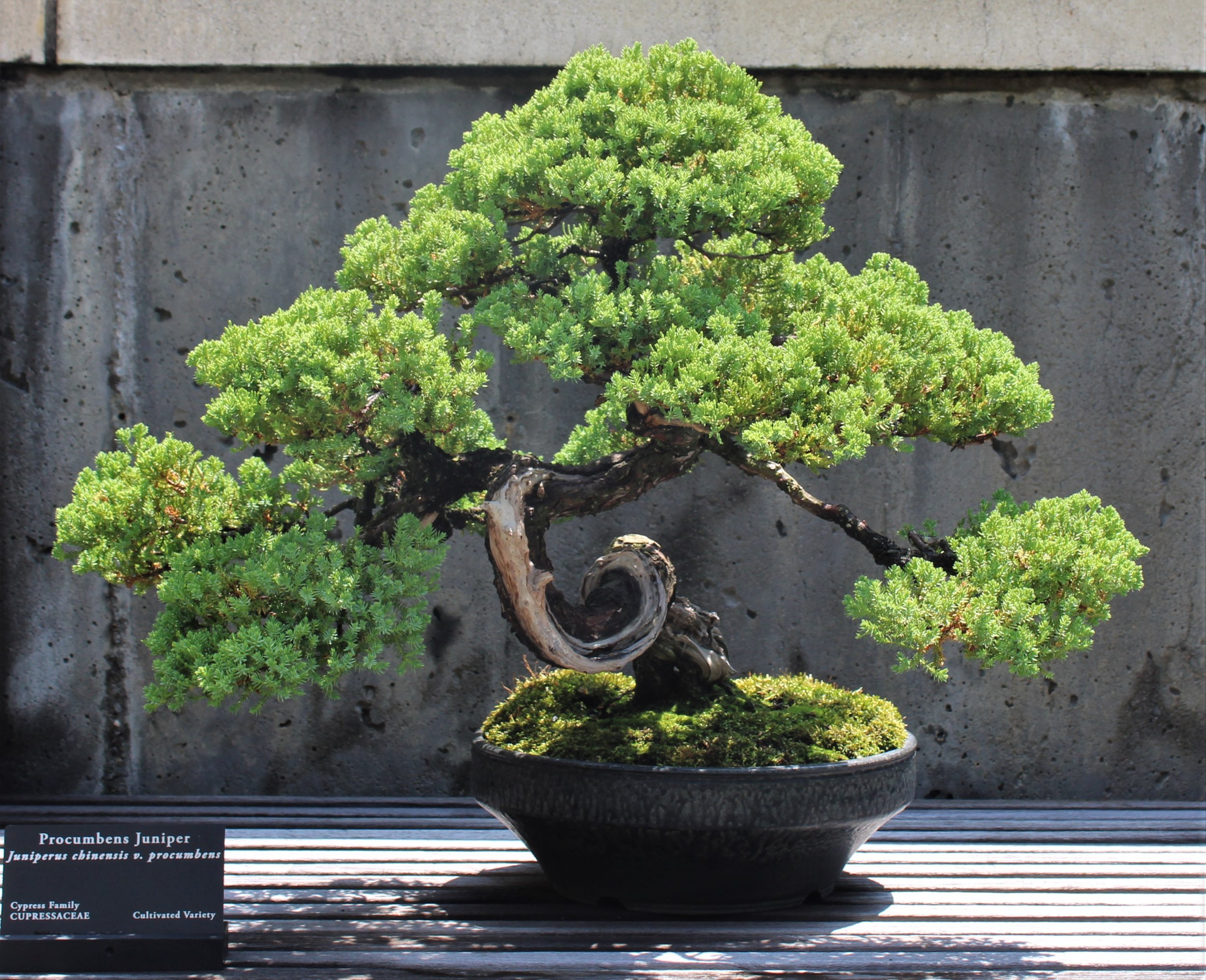Meeting Yoshimura
The World Bonsai Convention in 1993 was the first look I had at a slice of the national and even international bonsai scene. Because my going there was a last-minute development, I was registering at the hotel before I had much of a chance to think about what the convention would be like or what I might hope to derive from being there. I knew from advertising that some big name bonsai artists would be part of the event. There would even be a contingent from Japan, which in the hearts and minds of virtually every convention attendee was the center of the bonsai universe. I was there as the new curator of a new public collection that no one had ever heard of before, so it became apparent that I needed to make connections. I needed to make myself known.
In American bonsai, all through the 1970s and '80s, and well into the 1990s, there were two primary figures of gigantic stature. One of them was John Naka, who was based in California, and the other was Yuji Yoshimura, based in New York. Speaking broadly, the west coast of the United States was Naka's territory and the east coast was Yoshimura's. On the west coast, especially in California where there was a large Asian-American population and a lot of organized bonsai activity, almost all the important bonsai people traced their lineage back to Mr. Naka. He was a revered and beloved teacher. On the east coast and especially in the northeast, almost all the important bonsai people traced their lineage back to Mr. Yoshimura. He was a respected teacher, but he was not beloved by all who once learned from him. There were artists like Chase Rosade and Gerald Stowell who had studied bonsai under Yoshimura but then felt the need to declare independence from him, because they eventually found him to be too domineering and difficult to get along with. Both Naka and Yoshimura were recognized as important bonsai artists and teachers, but Mr. Naka was more personable and ultimately more popular and so he claimed an ever-increasing share of the spotlight.
I had been hearing mention of both Naka and Yoshimura ever since I had first stuck my toe into the bonsai pool. They were both presenters at the second World Bonsai Convention, so I knew I needed to see both of them in action, but it was Mr. Yoshimura I was most interested in seeing. Yoshimura was the better known name to me, probably because I was learning bonsai from people in the eastern half of the country. Don Torppa knew him, spoke familiarly about him and recommended Mr. Yoshimura's book: The Japanese Art of Miniature Trees and Landscapes. I got hold of a copy and started reading it. It turned out that Dr. Creech and Mr. Yoshimura knew each other well and each held the other in respectful regard. When I went to the National Bonsai and Penjing Museum, the workroom where I spent much of my time was named The Yuji Yoshimura Center. The Museum staff often mentioned his name and it turned out that volunteer Janet Lanman was not only Mr. Yoshimura's student and friend, but also one of his longtime patrons. She was the one who first suggested to me that it would be a great benefit if I could study with Mr. Yoshimura and that there might be some possibility of making that happen. Janet didn't say exactly how such a thing might come about, but I decided to do what I could to meet him while at the convention.
I saw Mr. Naka's demonstration, but there is little I remember about it. The theme of the convention was Forests of the World so all the headliners did group plantings in their presentations. Mr. Naka and a team of helpers who were some of his famous students used one hundred and eleven elm trees to make a representation of a forest scene. The extravagant number of trees was an act of bravado designed to command the attention of all attending what was at that time the most significant bonsai gathering ever staged in the United States. There were several larger trees that made up the core of the group planting, but many others were little more than seedlings, planted by the fistful. The program was held in a large banquet room and all the seats were packed. Mr. Naka chatted with the audience in a personable way, told stories and made little jokes that were chuckled at by those in attendance, and generally the program was a warm and friendly affair. I would have taken advantage of an opening to talk with Mr. Naka but that never happened. Any time I saw him there was a crowd of people around him, many belonging to a contingent from California that had made the trip east to support their favorite son. They called him Naka-sensei.
When Mr. Yoshimura gave his demonstration at the second World Bonsai Convention, I was right smack in the middle of the large crowd sitting next to Janet. She was obviously thrilled to see him up on the stage and she was plainly not the only one in that audience who held Mr. Yoshimura in great esteem. The feeling in the room was different from what it was for Mr. Naka's demonstration, though. The attendees were attentive and respectful, but there seemed to be a more serious, more expectant atmosphere. When Mr. Yoshimura appeared, I saw him to be a small wiry man, very thin, bald on top of his head, with a closely cropped white mustache under a flat nose and a bushy goatee on his prominent chin. He wore horn-rimmed glasses, a white short sleeve collared shirt and a necktie. He was accompanied by three helpers. Two of the helpers were well-known students of Mr. Yoshimura's — an older woman named Marion Gyllenswan and a younger man named Bill Valavanis. The third helper was another woman, considerably younger than Mr. Yoshimura and not one of his students. She seemed to be always near Mr. Yoshimura but always a step behind him, watching him closely with seeming anticipation and never looking at or speaking to the audience.
Yuji Yoshimura at the 1993 World Bonsai Convention in Orlando, Florida
The program began with a slide show, presenting images of different bonsai rock plantings representing a variety of natural environments. Mr. Yoshimura talked about philosophy and art. When it came time to do his demonstration planting, he did two simultaneously. One of the plantings was in the form of a typical bonsai forest, featuring a group of trees all of the same species, planted in a shallow oval container. The other planting was done on a rock, featuring craggy looking junipers, pre-trained for the occasion, and other secondary plants to represent shrubs. Mr. Yoshimura compared and contrasted the two creations, explaining how one was a near view and the other a distant view; how one was suggestive and the other definitive. He spoke with authority, just as he conducted the onstage work with precision. At one point Mr. Yoshimura revealed a group planting that was previously constructed and brought to the program as a prop. It was a small planting in a rectangular tray and when he held it up for the audience to see it looked strange. The little trees were planted in two straight lines side by side, the trees in each row lined up in exact size order. After a few moments of displaying the planting broadside, he turned it ninety-degrees and presented it so the audience was looking at it longwise, down the length of the pot. Suddenly there appeared a miniature tree-lined road stretching off into the distance. A bit of trickery, the planting created an optical illusion of great depth. The illusionary perspective worked only if one looked at the planting from the "wrong" direction.
There was a moment in Mr. Yoshimura's demonstration when he made a casual aside, and the sneaky, critical commentary of it passed almost unnoticed by the audience. He was presenting the junipers he had prepared for the rock planting, and explained that he had worked on the roots the night before and then had wrapped them in damp newspaper to keep them moist. He said newspapers were good for this purpose. Then looking up at the audience he said, "Must be Japanese newspapers!" He didn't crack this like an obvious joke. He said it straight faced and then went about his business. This was one of several instances during the program where Mr. Yoshimura projected what I took to be an iconoclastic tendency. He was conservative in his appearance, precise and formal in manner, but seemed rebellious in his attitude. At the conclusion of the program I turned to Janet and said, "What a dangerous old man!" She looked at me blankly for just an instant, then broke into a happy grin. "Yes," she said, "isn't he quite wonderful!"
Sometime later I saw him across a large, open foyer. I hadn't seen Mr. Yoshimura out and about during the convention before, only up on the stage when he did his demonstration. Now he was there in a wheelchair, which was a surprise, and he was looking frail. The chair was being pushed by the anonymous woman assistant who had been part of the program, the one who stayed close by Mr. Yoshimura and kept a watchful eye on him. There weren't many people around right now, and only a few were gathered near the little old man in the wheelchair. I decided to go over and introduce myself. It would have been better if one of the people from the museum was there to make introductions, but I was on my own and didn't know if I'd have another chance. As I walked up some people were saying goodbye and departing, but a younger couple were next in line and stepped up to Mr. Yoshimura to say hello. The young man was clearly the one most interested in the meeting. He was handsome and robust in manner, and took a knee next to the wheelchair so as to be at eye level with Mr. Yoshimura, who sat quiet and passive, his hands folded in his lap. The young man began earnestly telling Mr. Yoshimura how much bonsai meant to him and how much Mr. Yoshimura's book had meant to him, how he had read the book several times and always found something new in it. Mr. Yoshimura listened politely and nodded, but he was distant and gazed off at something no one else could see. I was standing a respectful distance away but near enough to hear the conversation and not making any real effort not to. The young man appeared to be feeling the awkwardness of the moment, so he began to stand but put a hand on Mr. Yoshimura's shoulder and said something to him in a low voice. Mr. Yoshimura nodded and said, "Yes. Thank you. Goodbye." The young man rejoined his partner and they walked away. I stepped up and in a rush of urgency told Mr. Yoshimura my name and how I had just been put in charge of a new public bonsai collection in North Carolina, at an arboretum that was part of a university system. I said I had seen his demonstration and very much enjoyed it. Mr. Yoshimura sat there just as he was when the young man before me was talking to him, and I began to feel self-conscious and a little desperate. I decided to play what I thought to be the best card in my hand. "Dr. John Creech is involved at the Arboretum where I work and he told me to give you his best regards," I said. Mr. Yoshimura raised his eyebrows. "Oh," he said, "Dr. Creech?" and nodded faintly. "Yes," I stumbled on. "Dr. Creech arranged for me to go to the National Bonsai and Penjing Museum, to study with Bob Drechsler." "Oh," said Mr. Yoshimura once more, and repeated the name, "Bob Drechsler." These replies were minimal but they were enough to keep me trying. I had only one other name to drop and I didn't have much hope of it doing any good after the others had landed so ineffectually. "At the Museum I met Janet Lanman and she speaks most highly of you," I said. Mr. Yoshimura fairly snapped to attention. "Oh?" he said. "Janet? You know Janet Lanman?" A rush of relief passed through me and I smiled and said I did know her and I was glad I did and I liked her very much. At this point Mr. Yoshimura looked up at me, looked right at me and leaned forward a little. "Maybe," he said, "you will come to Briarcliff Manor and study with me." He said this with seriousness, in a matter-of-fact way. I told him I would very much like to do that. A little more talk followed but didn't resolve anything, didn't offer any idea about when this study might occur or how to make it happen. Then the conversation was over because the woman who was with Mr. Yoshimura said he was tired and needed to go back to his room to rest. We said goodbye and she wheeled him away. I was left standing there by myself and hardly believing what just happened. But I heard the words over and over in my head: "Maybe you will study with me."
The following gallery features views of the bonsai garden, under the summer sun in the last week of June (click on any image for full view):

















